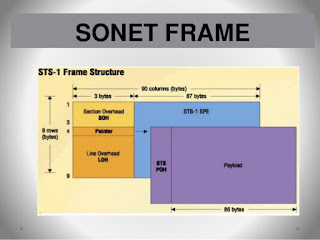Revising chapter 2
Telephony 2
Pages - Menu
How to Calculate Line Speed Or Bit Rate For One Channel.
How to Calculate Line Speed Or Bit Rate For One Channel.
Before that, I will tell you about Nyquist Theorem:
-In 1993, Harry Nyquist derived the minimum sampling frequency required to extract all information in a continuous, time-varying waveform.
-The Nyquist sampling theorem establishes the minimum sampling rate(fs) that can be used for a given PCM signal. For a sample to be reproduced accurately in a PCM receiver, each cycle of the analog input signal (Fmax) must be sampled at least twice.
-So, the sampling theorem states that for a limited bandwitch (band limited) signal with maximum frequency Fmax the equally spaced sampling frequency (Fs) must be greater than twice of the maximum frequency Fmax:
Sampling rate, fs = 2(fmax)
Example Question :
The human voice normally contains frequencies from 0 to 4000Hz. According to Nyquist Theorem, the sampling frequency (fs) is normally chosen to be twice of the highest frequency of a human voice and line speed or bit rate for one channel.
Answer:
Sampling rate, fs = 2fmax
= 2 x (4000 Hz)
=8000Hz
line speed or bit rate for one channel= sampling rate x 8bit
=8000 Hz x 8bit
= 64000bps
=64 kbps
Why we use 8 bit?
One bytes of data is transmitted during the time interval assigned to a particular channel. One channel transmits 8 bits and the halts (stop) while the next channel transmit 8 bits. The third channel then transmits its data word and so on.
Based On:
Politeknik Ibrahim Sultan Noted
By
Miss Rohana Binti Hasan.
Definition and Characteristic of SONET
SONET is the American National Standards Institute standard for synchronous data transmission on optical media. The international equivalent of SONET is synchronous digital hierarchy (SDH). Together, they ensure standards so that digital networks can interconnect internationally and that existing conventional transmission systems can take advantage of optical media through tributary attachments.
SONET provides standards for a number of line rates up to the maximum line rate of 9.953 gigabits per second (Gbps). Actual line rates approaching 20 gigabits per second are possible. SONET is considered to be the foundation for the physical layer of the broadband ISDN (BISDN).
Asynchronous transfer mode runs as a layer on top of SONET as well as on top of other technologies.
SONET defines a base rate of 51.84 Mbps and a set of multiples of the base rate known as "Optical Carrier levels (OCx)."
INTRODUCTION OF
MULTIPLEXING
-
PROCESS OF SIMULTANEOUSLY TRANSMITTING TWO OR
MORE INDIVIDUAL SIGNALS OVER A SINGLE COMMUNICATION CHANNEL OR LINK.
·
MUX:
MULTIPLEXER
·
DEMUX:
DEMULTIPLEXER
FDM and WDM :
-
Used
to deal with analog information
-
Individually
signal to be transmitted are assigned a different frequency or wavelength within
a common bandwidth.
TDM :
-
Used
for digital information
-
Multiple
signals are transmitted in a different time slot.
SYNCHRONOUS Digital Hierarchy (SDH STM-1 frame format) topic 2
- MSOH: Multiplex Section Overhead
- RSOH: Regeneration Section Overhead
The STM-1 base frame is structured with the following characteristics:
- Length: 270 column × 9 row = 2430 bytes
- Byte: 1-byte = 8 bit
- Duration (Frame repetition time): 125 μs i.e. 8000 frame/s
- Rate (Frame capacity): 2430 × 8 × 8000 = 155.5200 Mbit/s
The STM-1 frame is on the basic transmission format for SDH (Synchronous Digital Hierarchy). A STM-1 frame has a byte-oriented structure with 9 rows and 270 columns of bytes, for a total of 2,430 bytes (9 rows * 270 columns = 2430 bytes). Each byte corresponds to a 64kbit/s channel.
SYNCHRONOUS DIGITAL HIERARCHY (SDH) - topic 2 telephony
- SDH is European standard for synchronous transmission over a fiber optic network
- SDH stands for synchronous Digital Hierarchy
- Standardized multiplexing protocol that transfer multiple digital data over fiber optic channels
- SDH is the international version of the standard published by the International Telecommunications Union (ITU)
- Synchronous Transport Module (STM) is the base signal of synchronous Digital Hierarchy (SDH) protocol
- The base transmission rate of SDH protocol is 155.52Mbit/s and this transmission rate is designated as STM-1
Subscribe to:
Comments (Atom)




















